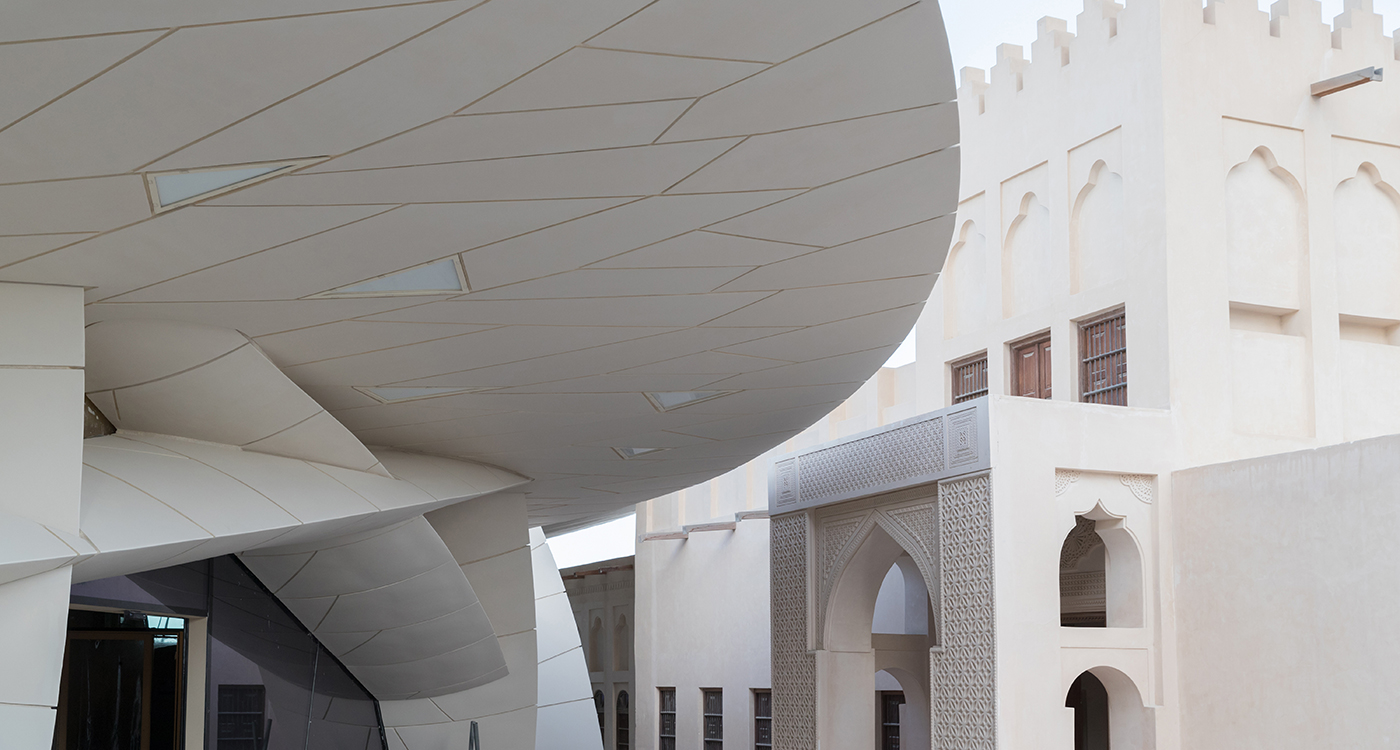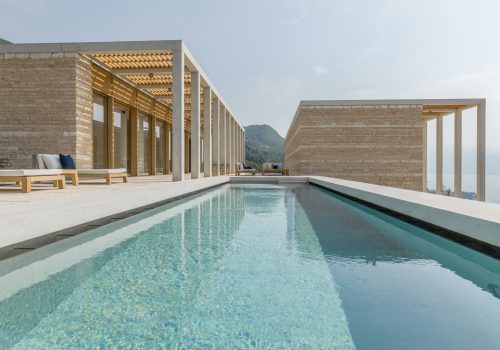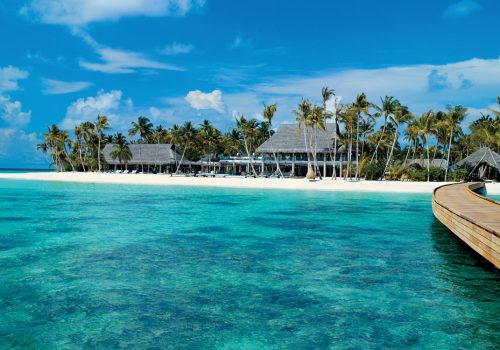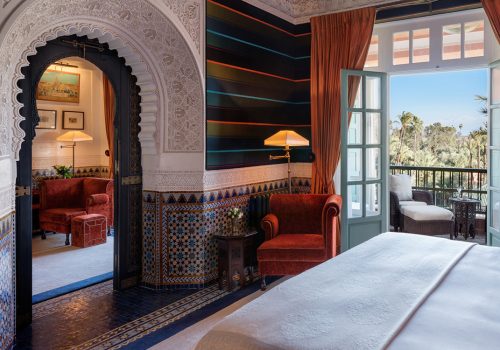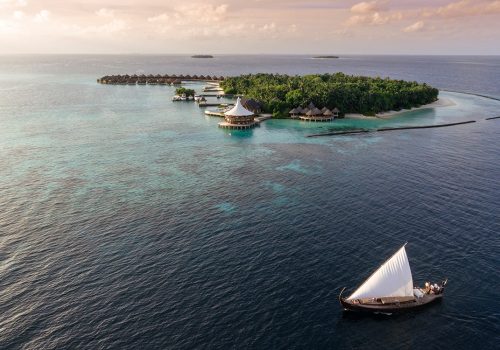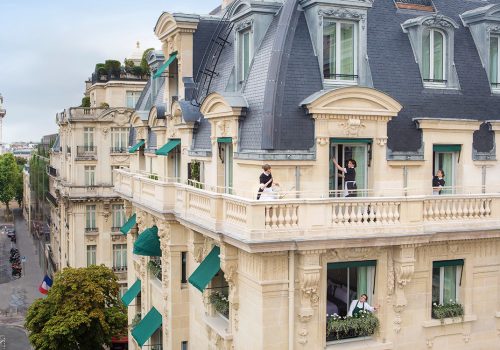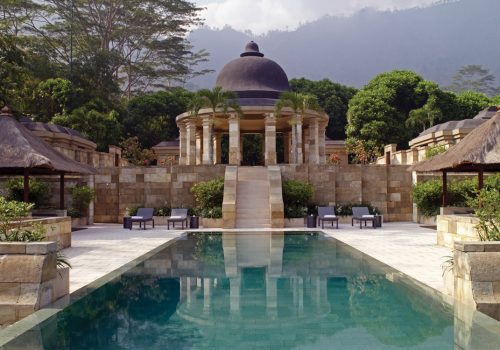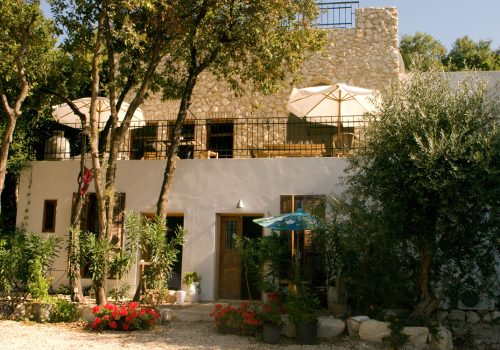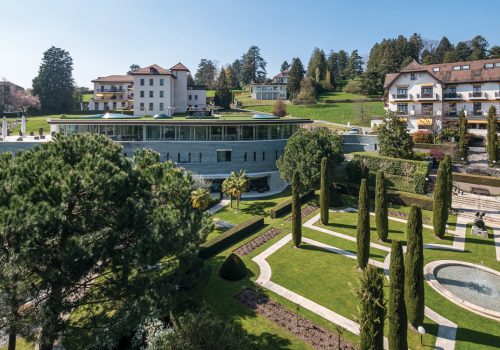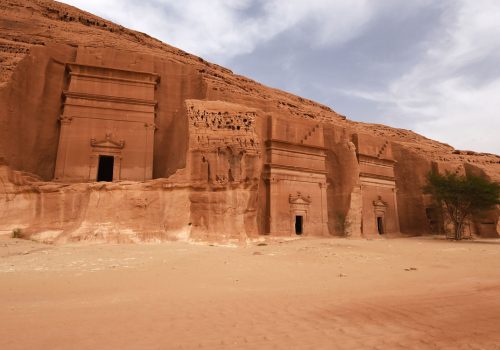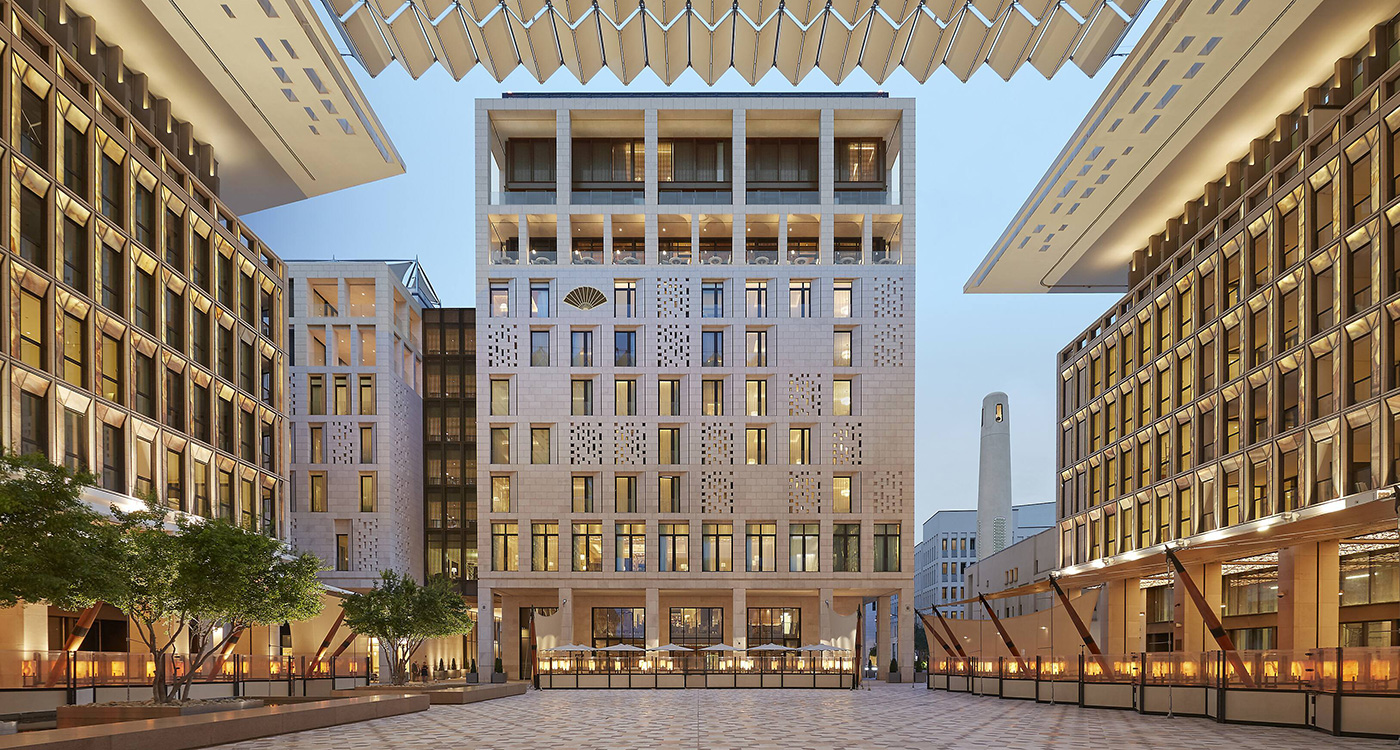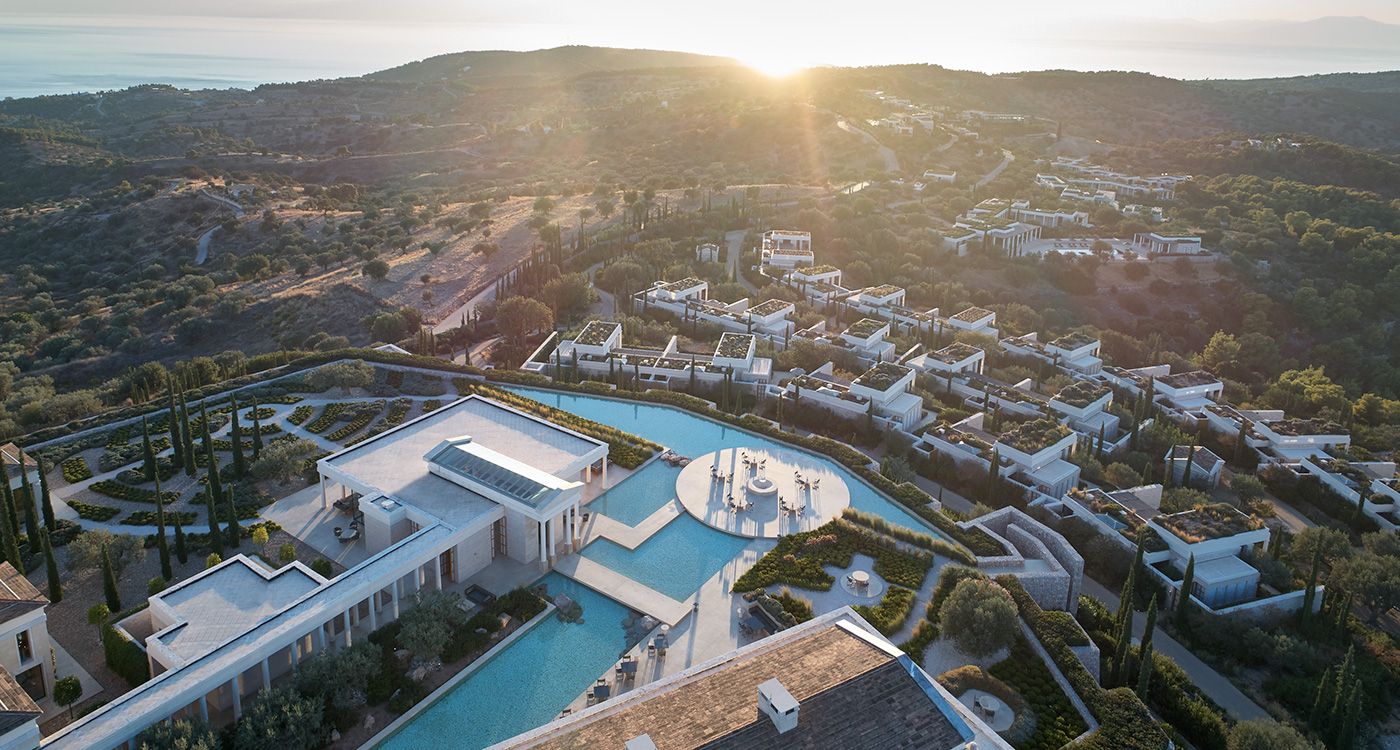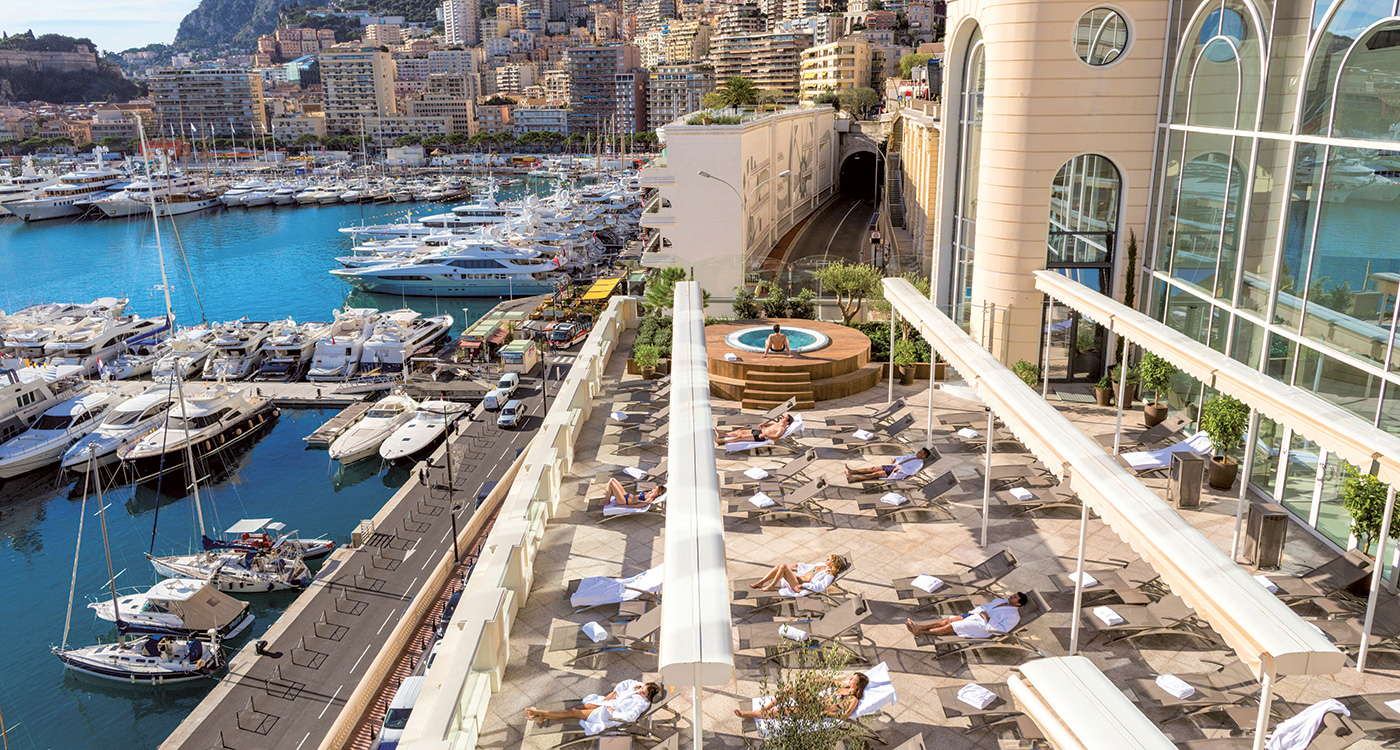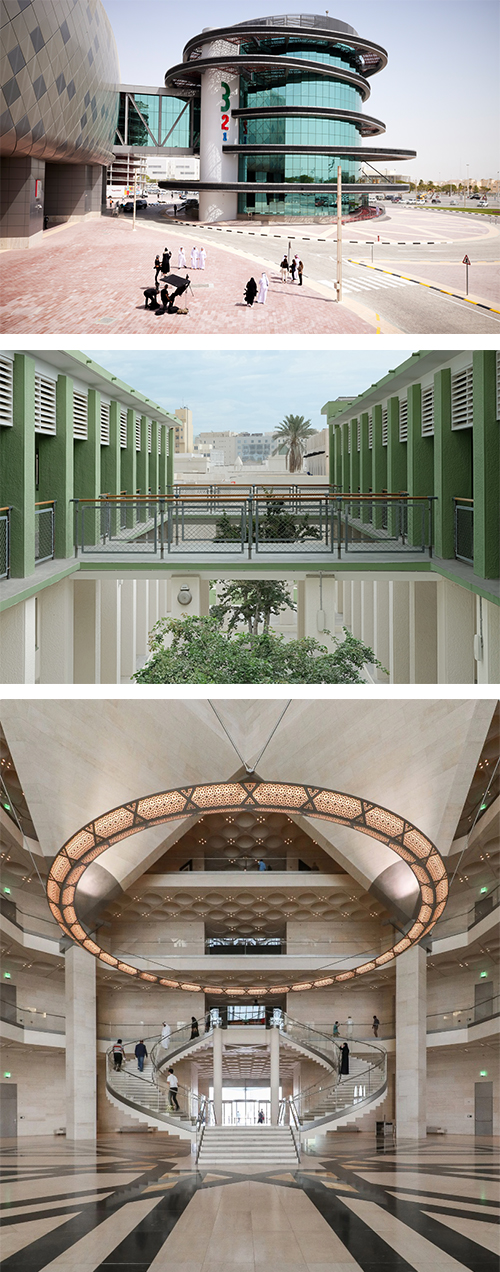
OPENER: The National Museum of Qatar occupies a vast area and from the moment you step inside you’re struck by the relationship between form and scale, between theme and thematics and of course between the small desert rose and this outlandish creation. ABOVE, TOP: The 3-2-1 is one of the largest sports museums on the planet, and the first Arab institution to join the Olympic Museums Network. ABOVE, MIDDLE: Liwan Design Studios and Labs opened in April 2022. ABOVE, MIDDLE: Following 18 months of extensive renovations, the Museum of Islamic Art formally re-opened its doors in October 2022.
No other sporting event can compete in significance to the FIFA World Cup. It is by far the most-watched programme in the world today with over half the globe tuning in to catch their favourite footballers and teams vie against one another. But there’s something about the game of football that evokes an intensity in people that’s quite unique to the sport. You don’t, for example, see it in fencing, long jump, shot put, or even athletics. It is only football that’s able to stage a month of inexplicable, contagious fever, delirium, and ecstasy. And the intensity is contagious. Football may have the capacity to break down barriers between peoples, nations and communities but it can also rile them up. Moreover, hosting such a prestigious event invites scrutiny and there was a lot to deliberate on this time, whether because of suspicions of corruption in the awarding process, denial of human rights, ecological disaster or the unusual timing of the event, and we didn’t even get to the elephant in the room – the indecently large amount of money that was spent to put it together. After all, Qatar allegedly spent as much as 220 billion USD – or shall we say 15 times more than Russia did in 2018. And, as they say, with great wealth comes great responsibility. Nevertheless, after the dust has settled from all this World Cup fever, many will realise what a phenomenal World Cup it was, and – hopefully – how much there was to do in this tiny country, besides attend football matches. They might even notice that the single biggest investment Qatar has made in the last two decades was not in roads, hotels, stadiums, metro system, or even airport upgrades, it was actually in culture. Why? Because it is the investment in culture – both in its preservation in a globalising world, and in cultural innovation and creativity – that will be central to Qatar’s future. And it is culture – not football – that will help shift the state towards a knowledge-based economy and away from its hydrocarbon dependency. Indeed, away from the spotlight that the world has shone on Qatar’s sporting aspirations, is a growing network of museums, heritage sites, festivals, public art installations and programming that may lead to the country’s growing stature in the world. Here are some you ought to know about.
3-2-1 Qatar Olympic & Sports Museum
Leading out from the world of football is the 3-2-1 located in Aspire Park, next to the Khalifa International Stadium. It was designed by Spanish architect Joan Sibina as two conjoined structures – the main building follows the arc of the adjacent stadium while the spiralled annex is inspired by Olympic rings. It encompasses 19,000 square metres, which makes it the second largest sports museum in the world. (The largest is in Colorado.) It provides insights and interactive tutorials on the origins of sports with many historic memorabilia and artefacts, including the world’s oldest surviving football from the 1888 FA Cup Final. There’s also a gallery with every original Olympic torch from 1936 onwards. There’s a sports icon hall for 90 trailblazers, each with a dedicated display case containing memorabilia like Mohamed Ali’s boxing glove from the Olympics in Rome, the signed basketball of the Dream Team with Michael Jordan, Schumacher’s title-winning Ferrari F1 car, the bobsled used by the Jamaican ‘Cool Runnings’ team and others for Zidane, Federer, Babe Ruth, Joe Montana, Tony Hawk and Jesse Owens, and so on. Finally, there’s family fun to be had at the arcade-like Activation Zone, where you can test your ‘physical literacy’ across five key pillars: fortitude, vitality, collaboration, control and quickness.
National Museum of Qatar
We can almost guarantee you’d lose the attention of your kids if you tried to read them a book on the history of Qatar but take them to the NMoQ and they’ll be mesmerised. The building was designed by the Pritzker-Prize-winning French architect Jean Nouvel to resemble a crystal-like succulent called a desert rose, complete with propagating interlocked discs and all. Its interior is no less fascinating, as it manages to tell a schoolbook story through an immersive multimedia narrative, using films, sounds, interactive displays and even scents. There are 11 galleries starting with the oldest artefact found in Qatar (a 400-million-year-old fossilised fish) traipsing through Qatar’s eventual formation including bedouin times, wars and conflicts, its tradition of pearl diving and the discovery of hydrocarbons that reshaped the nation.
Liwan
This place was an all-girls school – the Banat El Doha – from 1956 until it was abandoned in 2005. It was given a new lease of life though thanks to Qatar Museums, who turned it into a 24/7 Design Hub where creatives (not visual artists) can work, network and collaborate, while also gaining access to a digital photography studio, a pottery studio, a leather making studio, computers for graphic designers and a product prototyping lab. The maximum capacity is 80, they say, and they’ve already received 15 applicants so far, no doubt interested in Liwan’s workshops, masterclasses and mentorships with international designers.
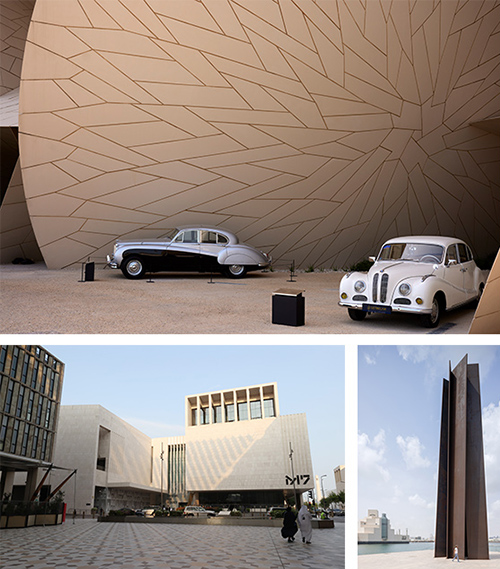
ABOVE, TOP: Vintage cars on display at the NMoQ to raise awareness for the upcoming 30,000 sqm ‘Qatar Auto Museum’, which will be designed by architect Rem Koolhaas. MIDDLE: The new five-storey, 29,000 sqm M7 is a startup hub dedicated to fashion, design and technology in the heart of Msheireb, the oldest part of Doha. BOTTOM: Created by the American sculptor Richard Serra and located across from MIA, ‘7’ is currently the tallest sculpture in Qatar. Interestingly, Serra was handpicked by I.M. Pei but the Qataris were so happy with his work that they invited him to design a second monumental piece, ‘East-West/West-East’ for installation in the middle of the desert.
M7
Designed by John McAslan+Partners (who also penned the nearby Mandarin Oriental), M7 opened in October 2020 as a support centre for local fashion designers, whichever stage they’re at. The name acknowledges its location (Msheireb) as well as its seven goals: inspire, equip, validate, empower, accelerate, connect and promote. The hub aims to host one major design exhibition a year (they already secured Dior and Valentino so far) to act as inspiration for the work the young designers produce. There’s also a seamstress school and an incubation hub where designers can learn to scale up their businesses.
Museum of Islamic Art
First opened in 2008 on a headland overlooking Doha Bay, the MIA was designed by the Chinese-American starchitect I.M. Pei as a five-storey structure inspired by the geometric patterning of Islamic buildings from the past. While it was full of incredible, priceless works, there had been a realisation that there wasn’t a strong enough museography to it all, so the museum underwent a massive 18-month refurbishment that has greatly promoted the visitor experience. “Before it was only about the art, now it’s about culture,” explains the museum’s director, Julia Gonnella. “We really want to tell the stories behind the masterpieces.” Even with a better flow, more interactive stations and a reconfiguration of the galleries, the museum’s most famous artefacts (like the 9th century Blue Quran, 13th century Cavour Vase, 14th century Franchetti tapestry and 17th century Varanasi necklace) still take pride of place.
Public Art
Anyone who visits Qatar these days can’t help but notice the hundreds of sculptures and artworks placed around the country for the enjoyment of residents and international World Cup visitors alike. “Public art is one of our most prominent demonstrations of cultural exchange, where we present works from artists of all nationalities and backgrounds,” explains Sheikha Al Mayassa, the chairperson of Qatar Museums and sister of the Emir, in a statement. “From the arrivals at the airport to every neighbourhood in our nation, public art is there to make your experience unique.” Highlights include Urs Fischer’s ‘Lamp/Bear’ at the airport, César Baldaccini’s golden thumb ‘Le Pouce’ in Souq Waqif, Damien Hirst’s ‘The Miraculous Journey’ outside Sidra Medicine, Louise Bourgeois’ ‘Maman’ spider and Richard Serra’s ‘7′ across from the MIA.
Art Mill Museum
Due to open in 2030 as part of Qatar’s 2030 plan, Art Mill (its name may change) will be the first museum of international modern and contemporary art in Doha. Amazingly, they have already acquired much of the museum’s collection well before construction has even begun. And, once the Alejandro Aravena-designed project is complete, it will aim to tie Western art to non-Western art unconventionally through what the museum’s director, Catherine Grenier, says are “creative ties that are more relevant and create a new vortex in a more fluid and connected world.” There’s even a little pop-up exhibition on the existing industrial flour mill site that’s running through till March revolving around commissioned film and photography pieces.


